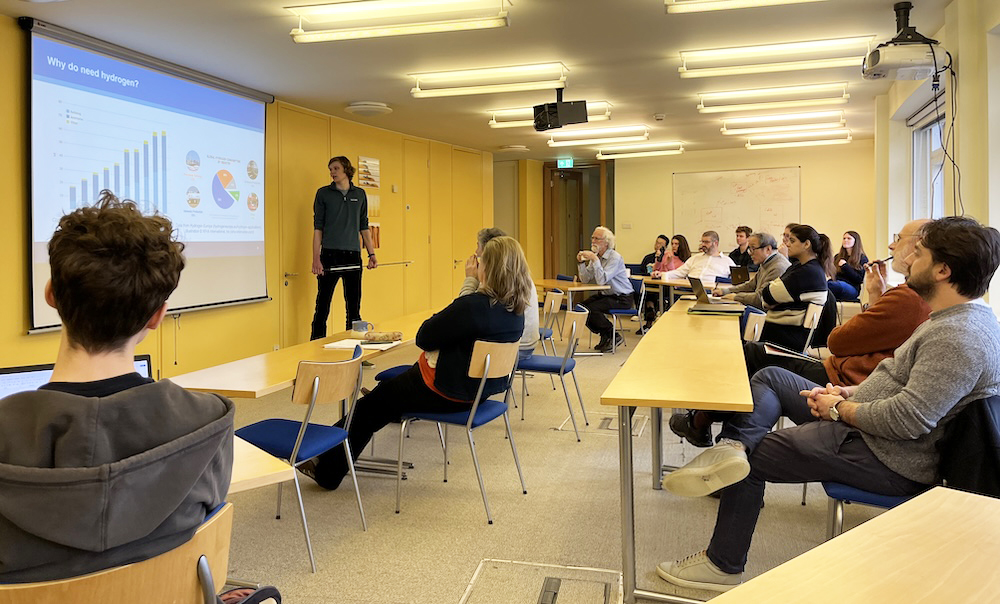Methane availability is crucial to the energy transition. Currently, most hydrogen is produced by steam methane reforming, a carbon-intensive process. A small amount of green hydrogen is being obtained from the electrolysis of water; however, for this carbon-free hydrogen to become prevalent, electrolysis must become much more efficient than it currently is.
PhD student James Morris has presented his work in the field at the weekly seminar today. During the last year, James has been studying how methane bubbles are nucleated at the surface of an electrode during alkaline electrolysis. The shape of the bubbles is controlled by a balance between pressure forces and surface tension, with smaller bubbles being approximately spherical.
For electrolysis to be as efficient as possible, it is important that the growing bubbles detach from the electrode as rapidly as possible after nucleation. James has been studying how the contact angle between a bubble and the electrode recedes as the bubble grows. Carving micron-sized pits or pillars on the surface of the electrode might help optimise the spacing between the growing bubbles, thus making the best use of the electrode surface.
James’ work on electrolysis is ongoing, and is accompanied by the experiments that Haihan is running in the laboratory. We look forward to their new results in the coming months!
